Are you thinking about developing an interactive touchscreen experience for an upcoming event or within a customer-facing environment?
By its nature, advanced manufacturing can be extremely complex and particularly so when you are trying to explain what you do, and the value you deliver, to a non-expert customer. Being able to visualise your products, solutions, processes and customer value via an immersive and impactful interactive experience is a great way to make an impression and bring your message to life, whilst ensuring customers have all the information they need – without feeling overwhelmed.
And because interactive touchscreen experiences are so flexible, you have an array of possibilities to choose from when developing content that’s going to have the impact you need.
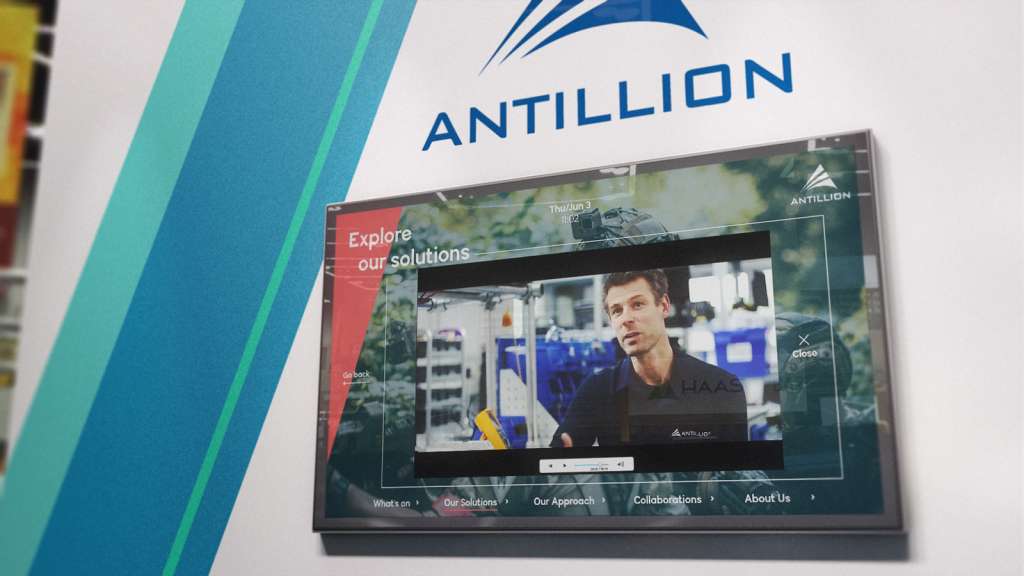
As interactive touchscreen specialists, we work with manufacturing clients who need to convey complex information to a wide audience and in a dynamic and innovative way that tells a very clear story – but when people first approach us, they don’t always have an idea of what’s possible and the various benefits of developing an interactive touchscreen experience.
So, we’ve highlighted some key reasons why touchscreens might be the right tool for the job when it comes to showcasing your engineering excellence.
1. Bringing your products and services to life
Touchscreens are intuitive to use and they appeal to our innate desire to explore and learn. With their interactive features, you can easily create experiences that add a whole new dimension to your content by creating a visual and interactive experience that makes your content more immersive and memorable.
Touchscreens let you build up interactive stories so you can create a simple stepped process for people to walk through that gradually builds up the story around your solutions making it easier to digest and understand.
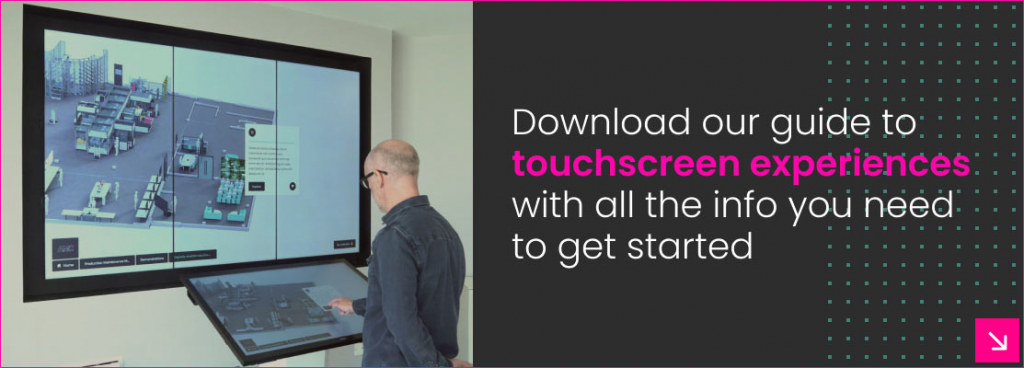
Using 3D models customers can rotate and zoom and using hotspots (interactive touchpoints) the customer can drill down into a model to bring up more detail and information if they want.
This is a great way to deal with different audiences, for example, those that just want to get a quick top-level overview or those that want more detailed information.
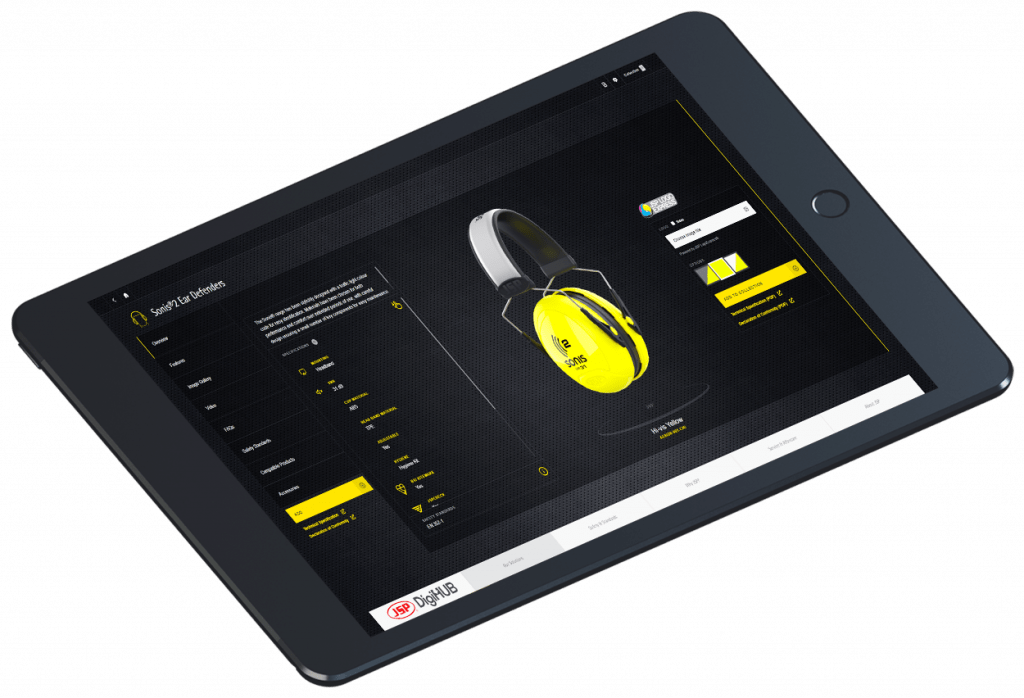
TIP: Find out which types of content can be added to a touchscreen solution to improve sales? It really comes down to your audience, solutions and what you’re trying to achieve.
Data released from 2016 (via ViewPoint Interactive Solutions) showed interactive touchscreens can drive almost 40% more foot traffic to a particular stand or booth at an event – and even better, keep prospects engaged for 50% longer than exhibits without a touchscreen.
2. Personalise your content to the customer
Heard the phrase ‘try to appeal to everyone, and you’ll end up appealing to no-one’? Well, if you try to squeeze all of your messaging into brochures or static content that broadly tries to appeal to all sectors – or worse, has specific information for every industry you’re targeting – then people will switch off, or get lost or bored having to flick through everything to find what they need.
A touchscreen interactive can hold a wealth of content without it being confusing or showing different audiences information that isn’t relevant to them. A well thought out user experience, and interactive menus, let you tailor your messaging based on who’s using your experience at any given moment and more importantly puts them in charge, making for a more personalised experience.
For instance, someone from the automotive industry steps up to your touchscreen, they’ll be presented with a menu letting them choose their industry, and drill down into relevant messaging and content you’ve created just for them! And when they leave and the next person steps up who happens to be in aerospace, they can then drill into the information they need.
3. Adapt your content and experience over time
If you attend a number of events the chances are the audience will be different at each and they will probably be targeted at different sectors.
An interactive touchscreen experience is an investment, and once you’ve spent time creating and developing the initial experience, you’ll want to be able to use it across different events.
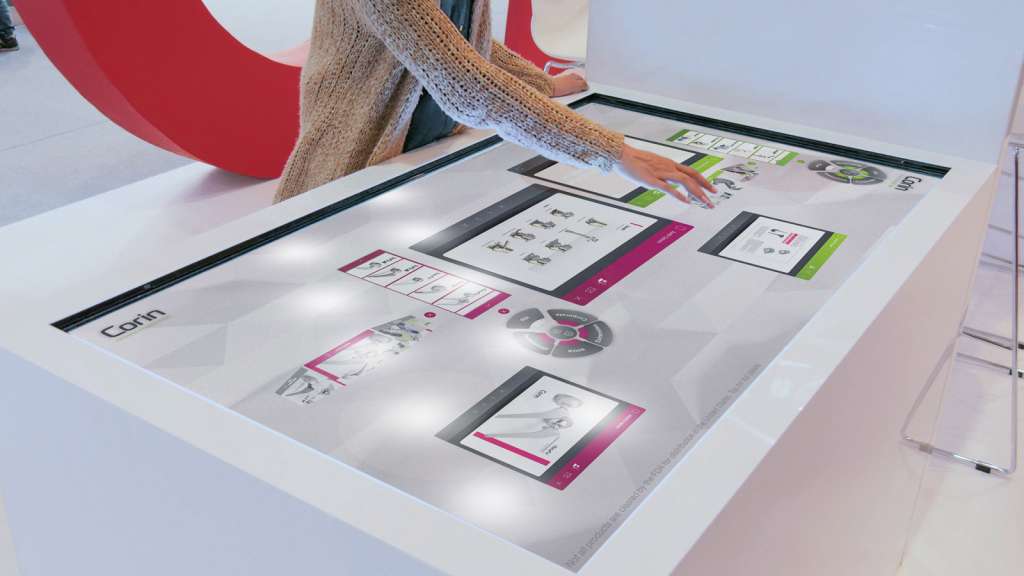
With a touchscreen experience, you can easily add in new products, change your content for different events (based on different products, talks or even appeal to different industries) and ensure that you’re delivering the best possible experience for your audience.
With in-built analytics, you can track exactly what people are looking at, and interacting with, which will help you to tailor your experience moving forward.
TIP: This isn’t something you have to keep going back to a developer for. As long as you let them know you need to update and adapt your touchscreen experience over time, they should be happy to provide you with a way of doing so – check out our case study with Antillion for more information!
4. Added functionality and features
If an interactive touchscreen experience is sounding like a good shout so far, then you may be surprised that there are so many other features you can add. For instance, did you know an interactive touchscreen can interact with other objects around them?
For instance, you can display a physical product or model in the room, and when users interact with the touchscreen, then the model or product can light up, depending on what part of the experience customers are playing with.
Touchscreens can also recognise items that are placed on them or brought up close. So, if you have a range of smaller items, a customer can bring one up to the screen and the experience will recognise the item and bring up relevant content.
Whilst we recommend not overloading a touchscreen with too much-written content, there are times when customers need to know details and specifications – especially on the larger engineering projects and solutions.
Rather than having users trying to read all of this content (and memorise it) whilst they’re interacting with the touchscreen, why not let them send this content to themselves so they can review the information later. This also means you’ll get contact details to be used later in marketing campaigns.
↑ For GSMA, we provided a simple and effective way for their audience to select and email content to themselves.
5. Update anytime from anywhere
Being able to update the content of your touchscreen experience will be an important consideration. If you have a Content Management System (CMS) for your experience and it is online this means you can update content remotely from any location. The touchscreen experience can also access the CMS, from any location in the world, which means any update will be instantly reflected in the experience wherever it is in the world.
The update does rely on the experience having access to the internet, but this only needs to happen when accessing new content, once it is downloaded the experience will still work without any internet connection.
This is a powerful feature that puts complete control in your hands and gives you a great amount of flexibility, you can even run multiple touchscreen experiences all with different content in different locations.
Advice on your next steps
So, there we have it! An interactive touchscreen can be an excellent addition to your firm’s event or customer-facing space, as they provide a great way to connect with your audience and let them find all the information they need in an immersive and memorable way. The possibilities are virtually endless!
Because of this, it can seem a little overwhelming at first, which is why if you’re seriously considering developing an interactive touchscreen experience, we’d recommend seeking out 2 – 3 different touchscreen specialists and see what they can offer you (we’ve added some more advice in our recent blog on finding the best interactive touchscreen display developer for your project). Even if it’s just for some free, no-strings advice!
They should also be happy to show you previous examples of their work on similar projects.
If you’d like to learn more about what’s possible with an interactive touchscreen experience, get in touch today on +44 (0)117 329 1712 or hello@popcomms.com. We’re always happy to answer any questions or talk you through your options. We read and respond to every message we receive.

Related Posts

What Features Can You Include in a Touchscreen?
Read
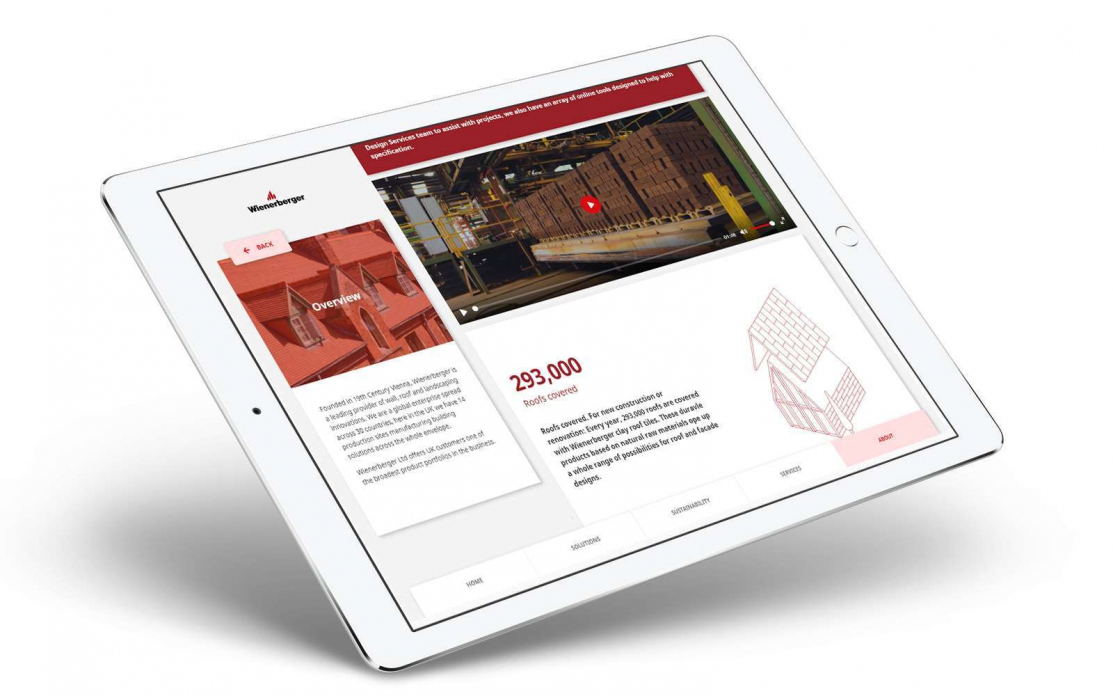
Why Good Content Management is Key to Sales Enablement
Read
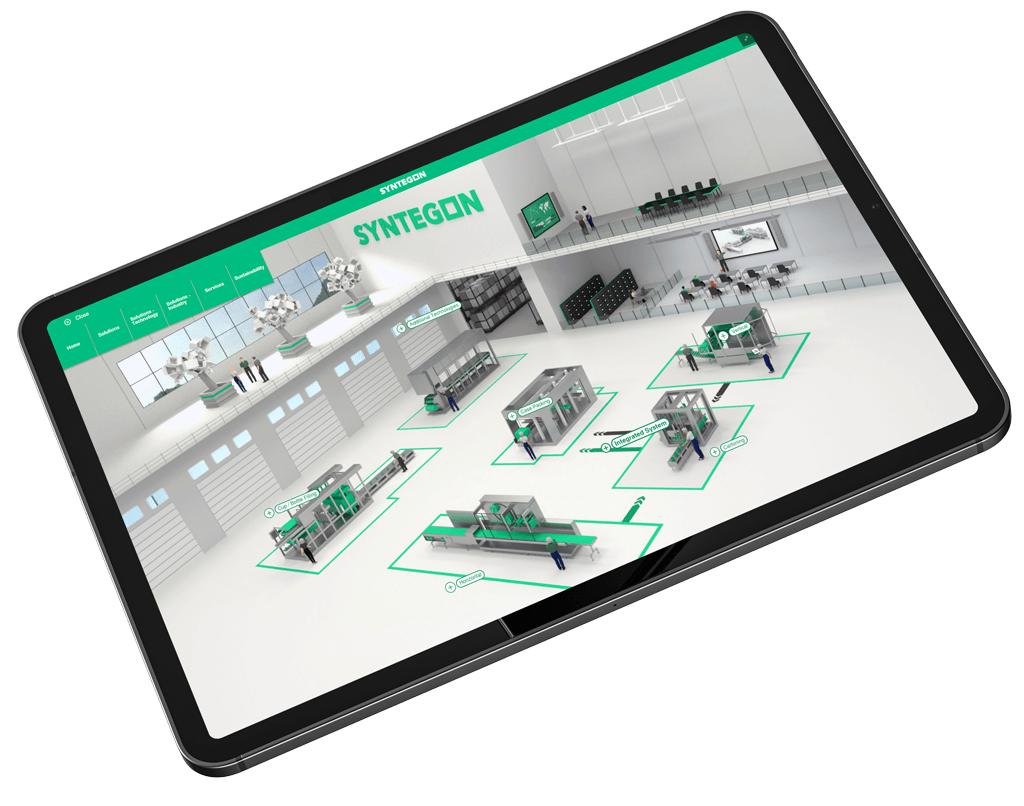
As an Advanced Manufacturer Creating an Interactive Touchscreen Experience, What Questions Should You Ask?
Read
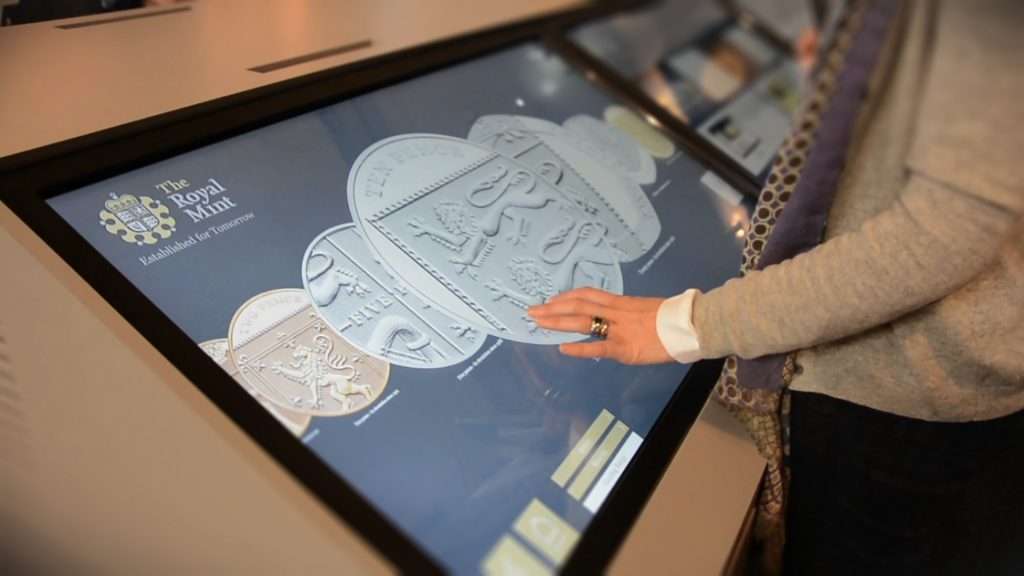
Why Interactive Touchscreens Keep Customers Engaged Longer
Read